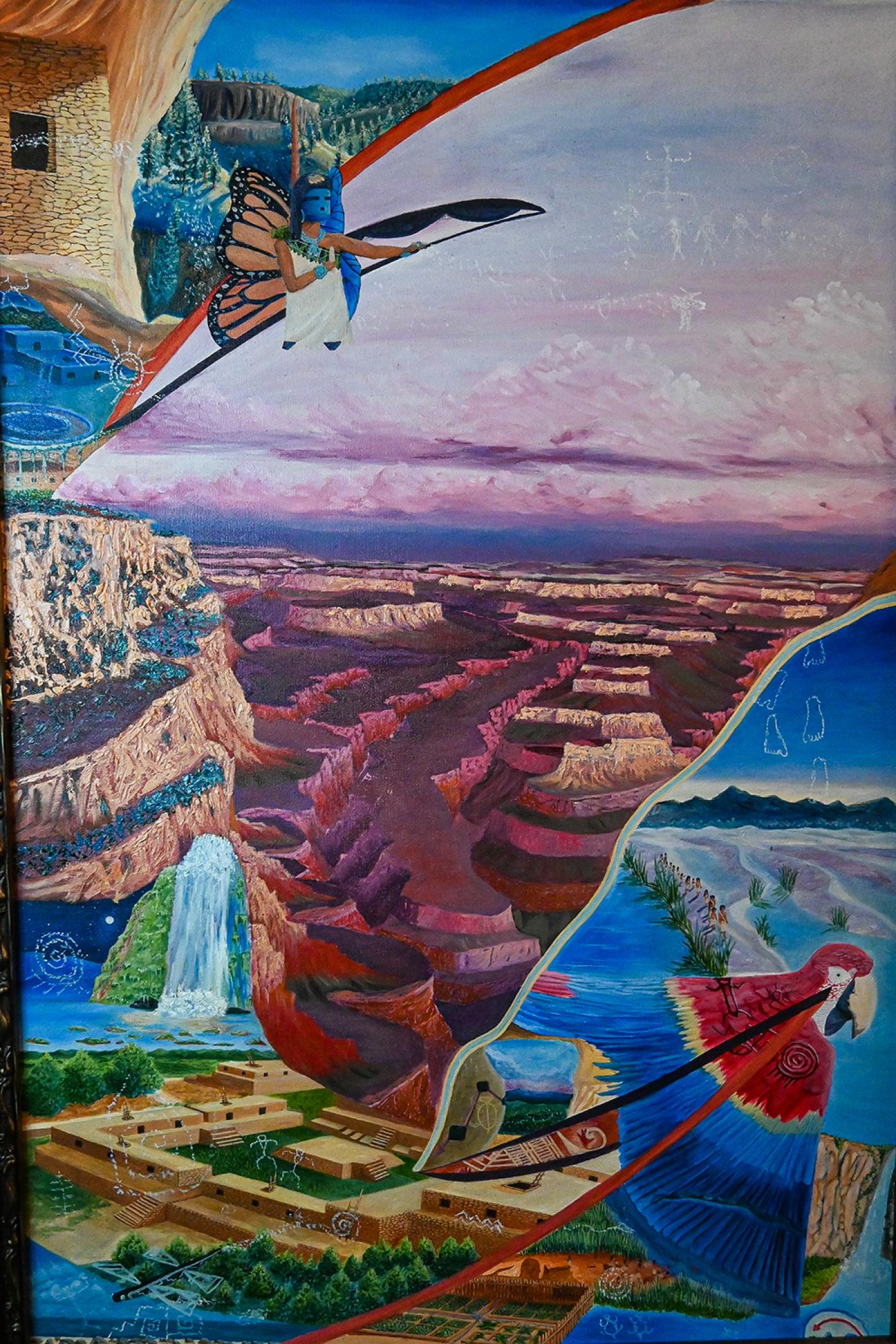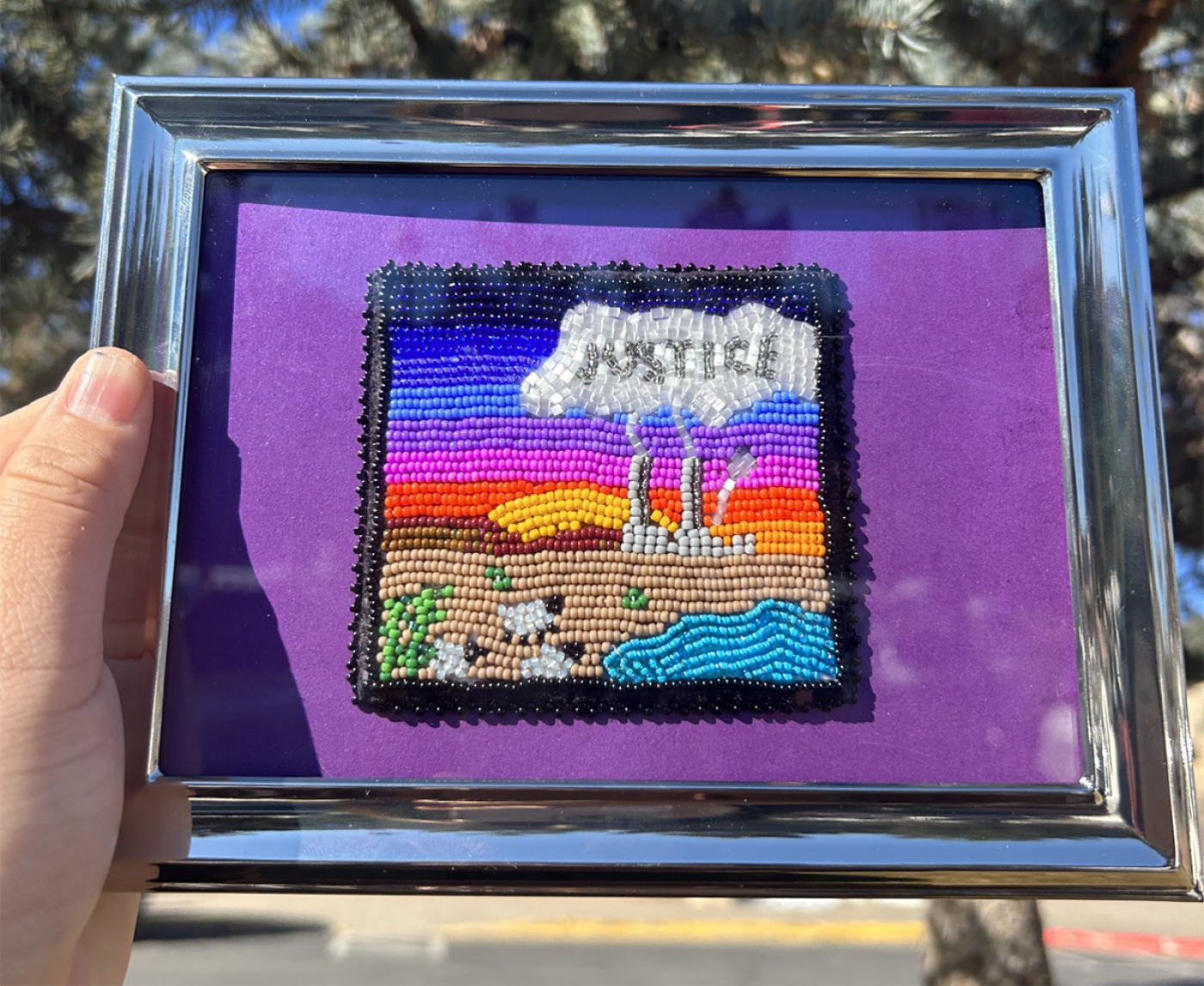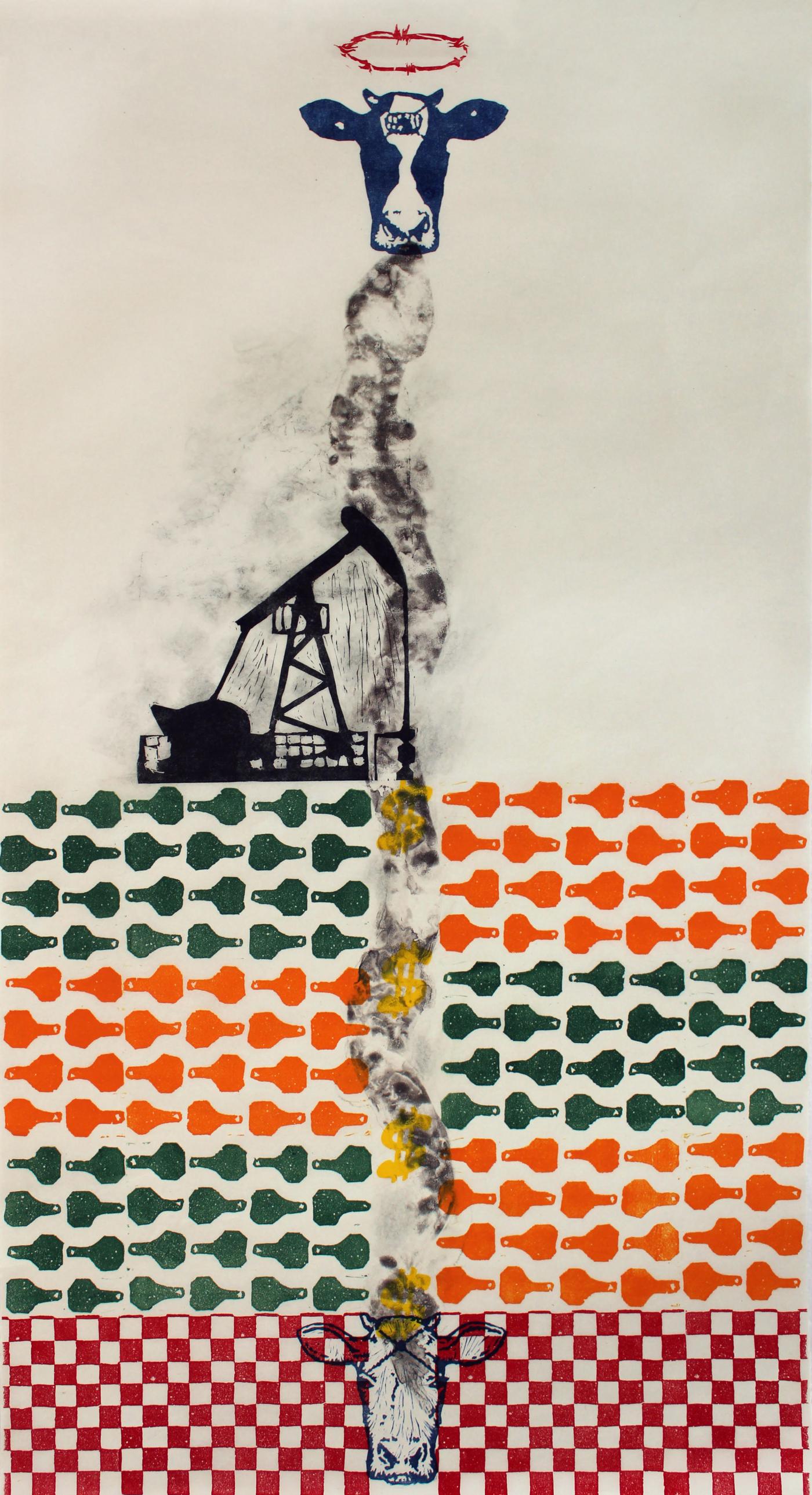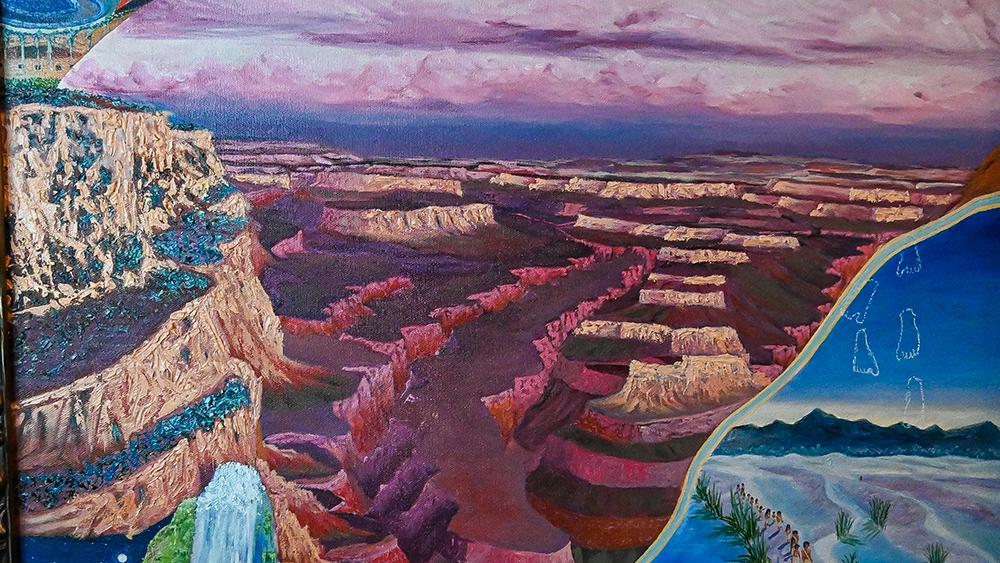Announcement
The Division of Environmental Service and Cultural Resource Management (DESCRM) is happy to announce the winners of the 2024 Young Tribal Leaders Art Contest!
The contest received over 100 submissions from Tribal citizens aged 14-30 across the nation. These pieces included various artistic mediums including painting, sculpture, beadwork, weaving, photography, and film; all of which centered the contest themes of culture, environment, and climate.
A selection committee of DESCRM and Institute of Tribal Environmental Professionals (ITEP) staff chose three winners whose artwork best depicted these themes. These winners will each receive full travel funding to share their work at the 2024 National Tribal and Indigenous Climate Conference (NTICC) in Anchorage, AK from September 9-12, 2024.
Along with the three winners, the selection committee chose twenty other exemplary works to exhibit online in the BIA’s 2024 Young Tribal Leaders Art Contest Gallery as well as at the Main Interior Building in Washington, DC.
Thank you to all artists who participated. We appreciate the time, creativity, and artistry of all contestants. Whether or not your submissions were amongst the selected winners, all entries will be considered for use in various BIA outreach materials.
“Dek'ohananne” by Lakin Epaloose

Description by Artist Lakin Epaloose (Zuni Pueblo), Age 20
The entire body of the artwork encompasses the migration story of not only the Zuni people (A:shiwi), but also the Puebloan communities of the southwest as a whole from a Zuni perspective. These locations extend all the way from the Grand Canyon into what is today known as central Mexico. The elements of water (k'yana), such as in the form of cumulus clouds (awethuya:we), and flora serve as key points in this work. Many of the petroglyphs and pottery designs found throughout each respective area are also depicted in the work.
“Indigenizing Environmental Justice Movement” by Kimey Begaye

Description by Artist Kimey Begaye (Navajo Nation), Age 23
I focused my project on the Cholla power plant located by my hometown in Winslow, Arizona. Opened 1962 it is coal fire generated.
Navajo land is abundant in gas, coal, water, and uranium. Currently, there are 5 extractive industries on our territories. Of those, there are 3 coal-fired power plants that are polluting our lands and contributing greatly to climate change.
What is indigenous environmental injustice?
Irresponsible and exploitative environmental policies that harm the physical and financial health of Indigenous communities, they also cause spiritual harm by destroying land held in a place of exceptional reverence for Indigenous peoples.
Exposure to emissions from coal-fired power plants can be extremely harmful to human health – even deadly.
Other community members described decades of watching the power plant and coal mine take precious water sources, pollute the air, extract materials from the earth, all while Navajo community members' health suffered and communities lacked electricity and running water.
Art shows power, evokes emotions, and challenges paradigm. It is a way to inspire action that would otherwise remain unseen.
“Zuzeca Sapa” by Kassidy Linabery

Description by Artist Kassidy Linabery (Rosebud Sioux Tribe), Age 28
The prophecy of a great Black Snake, spreading across the land, foretells the destruction of the water, the land, and the people. But it also serves as a beacon of hope: the people will have to unite, physically and spiritually, to protect Grandmother Earth.
Image

Related Page or Document
Contact Us
Albuquerque, NM 87104


